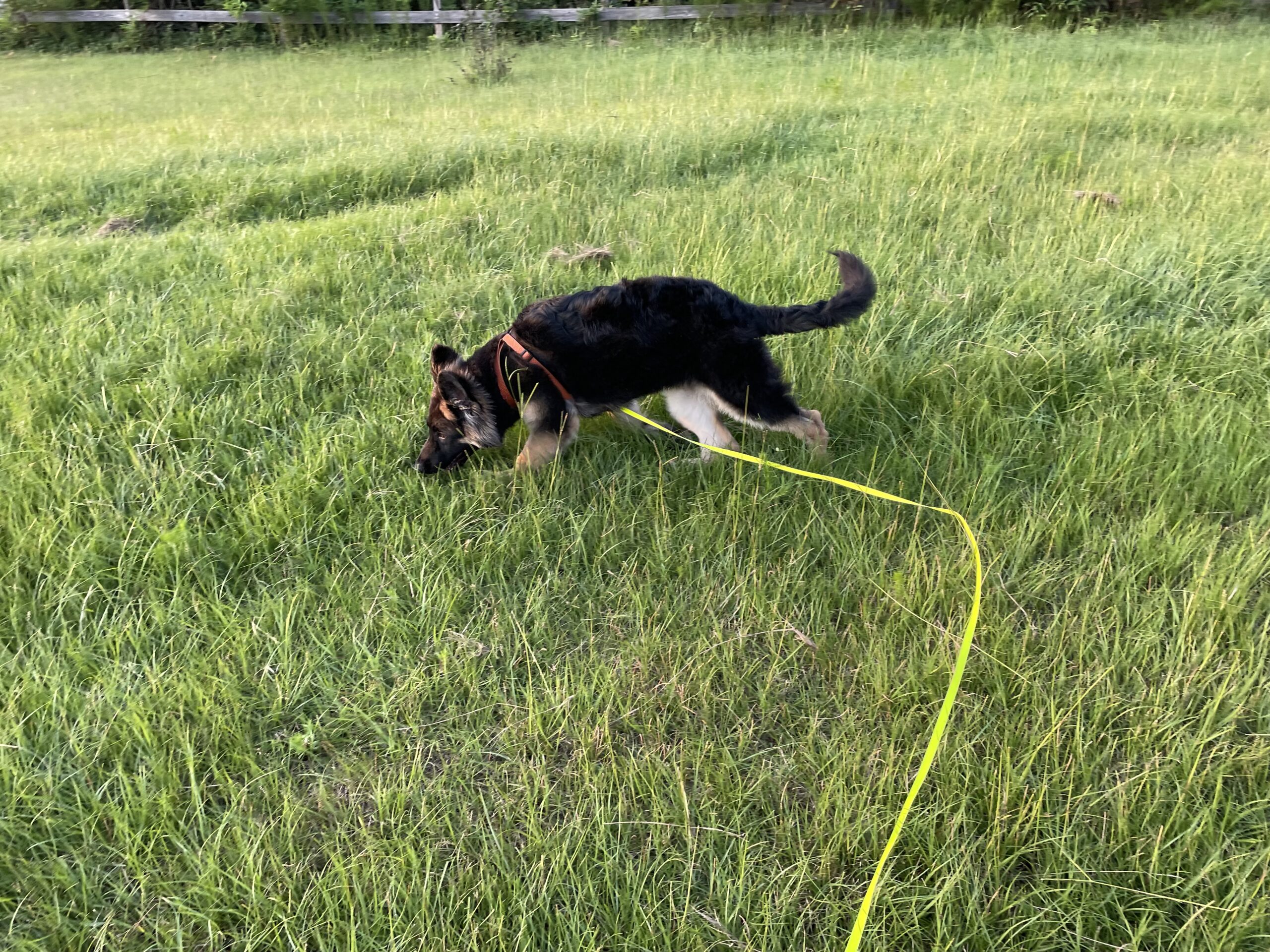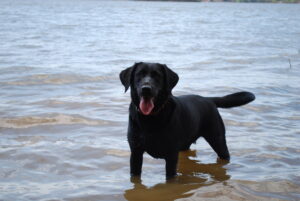Dogs have truly incredible noses. The wide variety of scent-based working dog roles is evidence enough: truffle hunting dogs, cadaver dogs, tracking dogs, search and rescue dogs, diabetic alert dogs, heart rate alert dogs, COVID detection dogs, cancer detection dogs, archaeological remains detection dogs, narcotics dogs, explosives dogs, arson and accelerant detection dogs, conservation dogs searching for endangered species…the list could go on and on.
So why does it seem like some dogs don’t even know they have a nose?
Or that they could, y’know, use that nose? To find that super stinky treat you just dropped?
This is where the “Find It!” game comes in! When your dog knows the “Find it!” game, they can start sniffing for a hidden treat on cue, and will stick with the hunt until they find the treat.
What you’ll need: your dog, some super stinky high value treats, a place to train without distractions.
Lesson One: Food Can Come From The Ground
Goal: Your dog eats food from the ground with enthusiasm.
- Toss a treat on the ground for your dog. It should be easily visible and accessible.
- After they successfully find and eat the treat, toss another a short distance away.
Lesson Two: “Find It!” = There’s Food Out There For You
Goal: When you say “Find it!” your dog immediately starts looking around for a treat on the ground, and spends at least 5 seconds looking before giving up if it’s hard to find.
- Choose a starting position and keep your dog stationary – this can be via a sit-stay, down-stay, using a baby gate, or simply holding their collar.
- Remember – this activity should be fun, so avoid using a starting position that is frustrating, scary, or difficult.
- Toss a treat for them a short distance away that is very easy for them to see. Say “Find it!” then release them to eat the treat. As soon as they eat the treat, praise them heavily and/or give them a free cookie!
- Reset your dog back to their starting position and repeat.
IMPORTANT: If your dog can’t find the treat, do not show them where it is. Instead, reset them and make the next one easier.
Lesson Three: The Nose Knows / Your Nose Is Faster
Goal: Your dog puts their nose to the ground when you say “Find it!” and searches for at least 5 seconds before giving up if it’s hard to find.
- Choose an environment to practice in that is a little hard to see treats on the ground. This can be grass or visually interesting ground, pavement the same color as your treats, a room in your house with toys on the floor, etc.
- Put your dog in their starting position.
- Toss a treat for them a short distance away that is pretty easy for them to see. Say “Find it!” then release them to eat the treat. As soon as they find and eat the treat, praise them heavily and/or give them a free cookie!
- Reset your dog back to their starting position and repeat.
- Slowly slowly slowly add difficulty until you see your dog put their nose to the ground to sniff out the treat.
Proofing & Polishing
- Start with super stinky treats to make it very easy for your dog to locate them by smell! You want it to be a no-brainer for them to choose their nose over their eyes when hunting. Once they’re really good at “Find it!” with stinky stuff, try using their normal treats.
- Only progress to the next stage when your dog is an “A” student and is successful 9 out of 10 times.
- Add distance, distraction, and difficulty one at a time to level-up their skills!
- As they get good at this, you can fade the starting position and instead covertly toss another treat where they won’t see it while they hunt. After they find the one they were hunting, just cue “Find it!” and move along.
Troubleshooting
- Don’t show them where the treat is! If you feel that you must help them find it, make sure to only show them where they can look for it – but not where they can find it! “Could it be right here? Have you checked here? What about over here?” etc
- The starting position is not necessary in the long term, but makes the teaching phase much easier and clearer for many dogs. If your dog really struggles with a solid starting position, you can skip it!
- Odor moves through the air a lot like smoke.
- It often rises in sunny, warm areas and falls in darker, cooler areas.
- If your dog is hunting in the grass, try putting their treats in sunny spots so the smell rises and hits their nose without effort.
- If your dog is hunting in the forest or in a room, the odor might get trapped overhead and fall back to the ground elsewhere.
- Air movement can really impact hunting! Air conditioning, fans, or doors opening and closing can move air around in unexpected ways. If you’re outside, help your dog search successfully by moving them downwind so the odor blows towards them.


